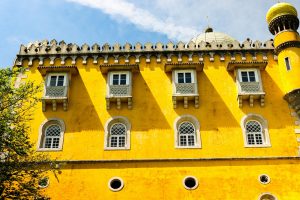How Upcycling Influences Modern Collections
Today, sustainability is at the forefront of the fashion industry. More and more brands are focusing on ethical practices and reducing their environmental impact. One of the key ways in which this is being achieved is through the process of upcycling. Not to be confused with recycling, upcycling is the process of transforming discarded materials into new and improved products, thus extending their lifespan. This innovative technique has had a significant influence on modern collections, transforming the way fashion is created and consumed. In this article, we will explore the impact of upcycling on the fashion industry and how it is shaping modern collections.
The Rise of Upcycling in Fashion
The practice of upcycling is not a new concept. It has been utilized in various industries for decades, but it is now gaining significant traction in the world of fashion. With the rise of fast fashion, where trends are constantly changing, the amount of textile waste produced is staggering. According to the Environmental Protection Agency, the average person in the US generates around 82 pounds of textile waste every year. However, upcycling presents a solution to this problem by diverting waste from landfills and giving it a new purpose.
Upcycling in fashion not only reduces waste but also supports sustainable practices. By utilizing discarded materials, the need for producing new resources is reduced, thus minimizing the environmental impact of fashion. This shift towards conscious consumption has been welcomed by consumers, who are now demanding more sustainable and ethical products from their favorite brands. As a result, more brands are exploring upcycling as a way to not only improve their environmental impact but also cater to the changing demands of consumers.
The Influence of Upcycling on Modern Collections
With upcycling on the rise, we are seeing a shift in the way fashion collections are created. Instead of starting with a new fabric and designing around it, designers are now looking to discarded materials as their source of inspiration. This unique approach has resulted in collections that are not only sustainable but also creative and innovative.
1. Transforming Waste into High Fashion
One of the most exciting aspects of upcycling is the transformation of waste materials into high fashion pieces. Designers are taking materials such as plastic bottles, discarded fabrics, and even old denim and turning them into stunning garments that are as fashionable as they are sustainable. This allows for a unique and one-of-a-kind aesthetic, as each material can bring its own texture, color, and story to the garment.
2. Redefining Luxury
Upcycling has also challenged the notion of luxury in the fashion industry. Traditionally, luxury meant exclusivity and high-end materials, but upcycling has changed this perception. By using discarded materials, luxury fashion can now be sustainable and accessible. This has led to the rise of brands that are not only creating beautiful pieces but also promoting ethical and sustainable values.
3. Collaborations and Innovation
Upcycling has also fostered collaborations and innovations within the fashion industry. By collaborating with other industries, such as technology and science, designers are coming up with new and innovative ways to upcycle materials. This has led to unique and unexpected materials being used in fashion, such as marine waste, coffee grounds, and even pineapple leaves. These collaborations have not only resulted in sustainable solutions but also opened up new possibilities for creativity in the fashion world.
In Conclusion
In today’s fashion landscape, upcycling is not just a trend, but a necessity. It has transformed the way collections are created, as well as redefined what luxury means in the industry. Consumers are now more aware and conscious of the environmental impact of their fashion choices, and upcycling has provided a solution that satisfies both style and sustainability. As the fashion industry continues to evolve, upcycling will undoubtedly play a significant role in shaping modern collections, and hopefully, lead us towards a more sustainable future.
References:
https://www.epa.gov/facts-and-figures-about-materials-waste-and-recycling/textiles-material-specific-data










